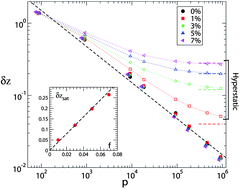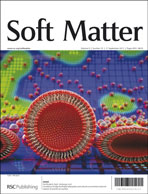Jamming transition of randomly pinned systems
Abstract
We consider a system of hard spheres close to jamming, where the translation invariance is broken by pinning a randomly chosen set of particles. By using two different protocols, we generate two kinds of packing at the jamming point, isostatic and hyperstatic packing. In the case where the packing is isostatic, the jamming transition is not affected by random pinning: the jamming density is only slightly reduced, a generalized isostaticity condition holds, the system is marginally rigid over the entire glass phase, and the typical structural signatures of jamming are unchanged. Besides, random pinning does not have an effect on the vibrational modes of the amorphous system, at least on the time and length scale that we are able to probe. For packing that is hyperstatic at jamming, the microscopic properties of the system are strongly affected by the random pinning; the frozen degrees of freedom introduce an excess of constraints that drive the system far from the mechanical marginality conditions and stabilize the low frequency modes of the system, shifting them to higher frequencies. The distance from the isostatic point seems to be the only relevant parameter in the system in both cases. These two cases are in contrast with the behavior of the plane waves of a crystal; the whole spectrum in this case is shifted to higher frequencies as soon as some particles are pinned.


 Please wait while we load your content...
Please wait while we load your content...